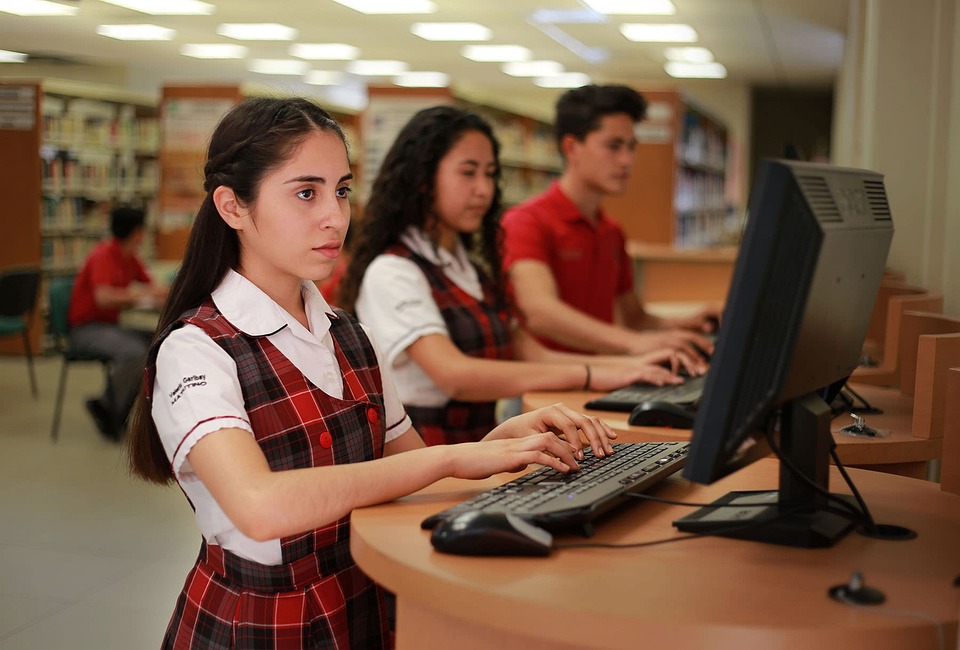Features of U.S. Schools: Organization of the Educational Process

Key Differences Between American Schools and Those Many of Us Are Used To
- Education in the USA is Child-Centered
Education in American schools focuses on personal growth, developing individual qualities, and helping children excel in what they do best.
How does this work? There are mandatory classes, but also optional subjects that students can choose based on their interests. If a child excels beyond their peers, they may attend classes with older students. Teachers encourage deeper engagement in subjects where students show particular strength.
- Deep Engagement in Topics Instead of Rote Learning
Teachers in American schools aim for an in-depth understanding of topics. Lessons resemble conversations rather than traditional lectures, making students more involved and interactive, which helps them retain and understand the material better.
- Schools are Tied to Your Residence
In the U.S., schools are often tied to specific postal codes, meaning children usually attend schools located near their homes. Therefore, families choose neighborhoods not only based on work proximity but also on the quality and reputation of nearby schools.
- All Schools Have a Place in National Rankings
Parents can learn about school quality from forums or platforms like Greatschools.org. These rankings consider student performance, helping parents identify the best school for their child.
- School Rules Are Strictly Enforced
Each school has its own internal rules regarding uniforms and events, but there are also universal rules concerning discipline and mutual respect. Serious breaches can lead to meetings with the principal, and repeated violence may result in police involvement.
- No Parent-Teacher Meetings
Communication between schools and parents happens through daily notifications and notes sent home. Grades are discussed once a year during individual meetings between the teacher, parents, and the student. Parents can also volunteer in school activities, which counts toward their work experience
7. Schools are divided into two groups: elementary and secondary
Elementary and high schools in the U.S. are completely different buildings. Your child will not study in the same building or classroom throughout their entire schooling period. Not only do the buildings change, but the teachers as well, as they are periodically transferred from one school to another after certification to prevent corruption and bias toward certain classes.
8. Additional English classes
Often, migrant children come to American schools who either know very little English or don’t know it at all. No one makes fun of them or points fingers because it is normal, as the U.S. is a country built by immigrants. Many came long ago from other continents without knowing the language.
For such children, there are additional English lessons after regular classes. Moreover, their classmates often try to help the newcomer understand the teacher and the lesson’s topic.
9. In the lower grades, lessons are often not at desks
In the lower grades, children do not sit at desks from the first day of school. Lessons are often conducted outdoors, in a format of games, dialogues, songs, or storytelling. Even in the classroom, lessons can take place on the floor, where children sit on a soft carpet and listen to the teacher. Some children may get distracted, but the teacher gently redirects them back to the lesson.
In lower grades, children still find it hard to concentrate on one topic for long, and teachers understand this and know how to work with it.
10. The education system is designed for 12 years
Children study in school for 12 years, after which they can enter college or university, depending on the family’s financial situation. Lessons typically last until 3:00 p.m., and the schedule remains almost the same every day. Children have daily physical activity, ensuring they don’t sit idle. They also have a lunch break, and you can either pack a meal for them in a lunchbox or they can eat in the school cafeteria.
11. The classroom is locked during lessons
This is done to prevent terrorist attacks or intruders from entering classrooms. U.S. schoolchildren are also taught how to behave during evacuations or shootings – an essential safety protocol that can save lives.
12. There are no textbooks
Forget about heavy backpacks. In U.S. schools, all homework is either written in the child’s notebook or placed in a special folder. It includes printed materials from the lesson, homework, and possibly a note from the teacher for the parents.
School life in the U.S. is very different from what people in former Soviet countries remember. It is brighter, more fun, and overall different, but not any less interesting.
We hope this gave you some insight into American school life and helped you better understand what to expect for your child. We wish you success in finding the right school and enjoying the U.S. school experience!
Table of Contents


